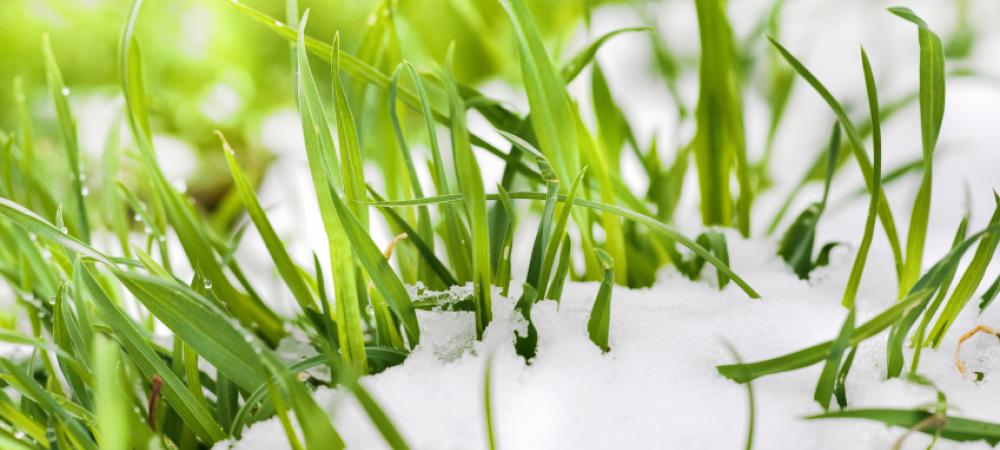Winter Lawn Care Tips for Homeowners in Texas

Winter in Texas brings mild temperatures compared to much of the country, but that doesn’t mean your lawn can be neglected during the cooler months. A well-maintained lawn in winter sets the foundation for a vibrant, green yard come spring. Texas homeowners can take advantage of the relatively mild climate to provide essential care for their grass during winter dormancy. Below are comprehensive tips to ensure your lawn stays healthy and prepared for the warmer months ahead.
1. Adjust Your Watering Schedule
Texas winters often bring inconsistent rainfall, so your lawn may still require supplemental watering, though far less frequently than in the summer. Lawns generally need about 1 inch of water every 2-3 weeks, depending on the amount of rainfall. Overwatering can lead to fungal diseases due to the cooler, wetter environment, so it’s important to monitor moisture levels. Check your lawn regularly by pressing a screwdriver into the soil; if it penetrates easily, there’s enough moisture.
- Tip: Water your lawn early in the morning to allow moisture to soak into the soil before temperatures drop at night, reducing the risk of fungal growth.
2. Apply a Winter-Specific Fertilizer
Fertilizing your lawn during the winter provides essential nutrients to help your grass survive the colder months and emerge strong in the spring. Choose a winter fertilizer high in potassium, which enhances root growth and improves your grass’s ability to withstand stress. Potassium helps strengthen cell walls, increasing your lawn’s resistance to cold, drought, and disease.
- Application Timing: Apply winter fertilizer in late fall or early winter before the first frost, giving the nutrients time to work into the soil.
- Tip: Avoid high-nitrogen fertilizers in winter, as they encourage blade growth, which can be damaged by cold weather.
3. Mow Less Frequently
As grass growth slows during winter, you can reduce your mowing frequency. However, it’s still essential to maintain an ideal grass height. For most warm-season grasses common in Texas, such as Bermuda or St. Augustine, keep the mowing height around 2 to 3 inches. This height protects the roots from cold weather while still allowing enough sunlight to reach the base of the grass.
- Tip: Before putting away your mower for the season, ensure the blades are sharp. Dull blades can tear the grass, leaving it vulnerable to disease and pests.
4. Aerate Your Lawn
Texas soils, particularly in areas with heavy clay content, can become compacted over time. Aeration, which involves creating small holes in the soil, helps alleviate compaction and improves air, water, and nutrient movement to the grassroots. Aerating in early winter or late fall ensures that your lawn is well-prepared for root growth and can take in the nutrients it needs.
- Tip: For best results, rent a core aerator that removes plugs of soil rather than just poking holes, as this allows for deeper aeration and better soil improvement.
5. Remove Debris and Fallen Leaves
Although the temptation to leave fallen leaves on your lawn might be strong, doing so can cause significant damage. A layer of leaves or debris blocks sunlight and traps moisture, which can lead to mold or fungal diseases. Rake or blow leaves regularly to ensure your grass can breathe and receive enough light. Even dormant grass needs access to sunlight for healthy root function.
- Tip: Shred fallen leaves into smaller pieces and use them as mulch around trees and flower beds rather than disposing of them.
6. Control Weeds with Pre-Emergent Herbicides
Cool-season weeds can quickly take over your lawn during the winter months if left unchecked. Weeds like chickweed, clover, and henbit thrive in the cool Texas winters. To prevent their spread, apply a pre-emergent herbicide in late fall or early winter. This stops weed seeds from germinating, keeping your lawn clean and reducing competition for nutrients.
- Tip: Be cautious when applying pre-emergent herbicides if you plan to overseed your lawn, as they can inhibit the growth of new grass seed as well.
7. Overseed Warm-Season Lawns
If you have warm-season grass, such as Bermuda or Zoysia, overseeding with cool-season grasses like ryegrass can help keep your lawn looking green during the winter. Ryegrass grows quickly and can handle the cooler temperatures, ensuring a vibrant lawn even during the dormant period.
- Tip: Overseed in late fall when temperatures start to cool, but before the first frost, to give the seeds time to establish.
8. Mulch Flower Beds and Edges
While not directly related to lawn care, mulching flower beds and the edges of your lawn can help protect your grass and plants during the winter. Mulch helps retain soil moisture and regulates the temperature of the soil, protecting both the root system of your plants and the edges of your lawn from freeze damage.
- Tip: Apply 2-3 inches of mulch around trees, shrubs, and flower beds to insulate roots and prevent moisture loss.
9. Monitor for Pests
Even though many insects slow down in winter, some pests, like grubs, can continue feeding on your lawn’s roots. Be vigilant for signs of pest activity, such as brown patches or grass that pull up easily. If pests are present, treat them promptly with eco-friendly solutions to prevent further damage.
- Tip: Consider consulting with a lawn care professional if pest issues persist, as treatment methods can vary depending on the type of pest and severity of infestation.
10. Prepare for Winter Storms
While Texas winters are generally mild, occasional cold snaps and winter storms can cause damage to your lawn. Be prepared to protect your grass during sudden temperature drops by covering vulnerable areas with frost blankets. Focus on newly established grass, which is more sensitive to cold temperatures.
- Tip: Pay attention to weather forecasts, and water your lawn lightly before a freeze to help the soil retain heat.
Winter lawn care in Texas is all about preparation and balance. With the right amount of watering, fertilizing, mowing, and protecting against pests and weeds, you can ensure your lawn stays healthy during the cooler months. Taking these steps not only preserves the health of your grass through winter dormancy but also sets you up for a lush, green, and thriving lawn when spring arrives. By following these tips, Texas homeowners can keep their lawns looking great year-round.
If you'd prefer professional lawn care services to prep your lawn for the winter, contact our team at Just Right Lawns today!

